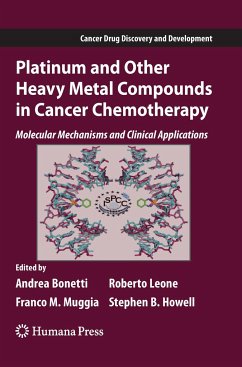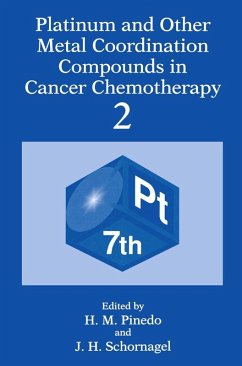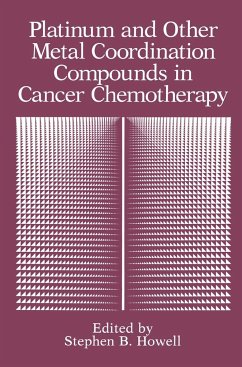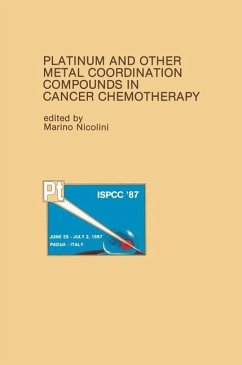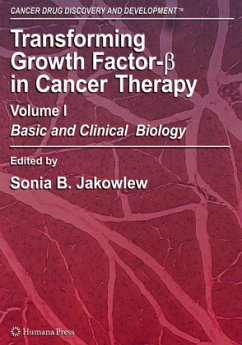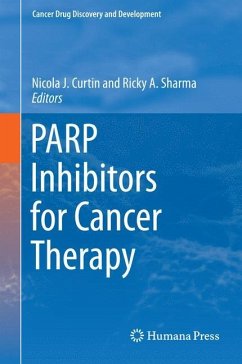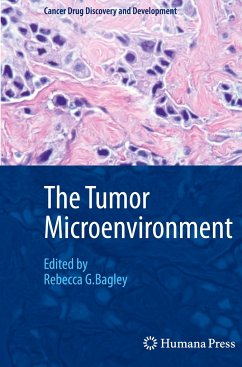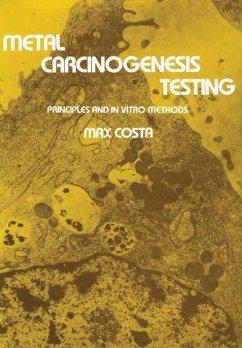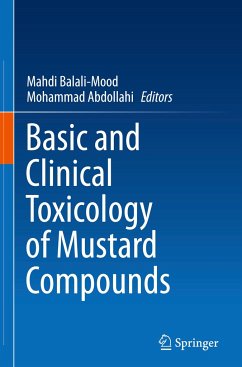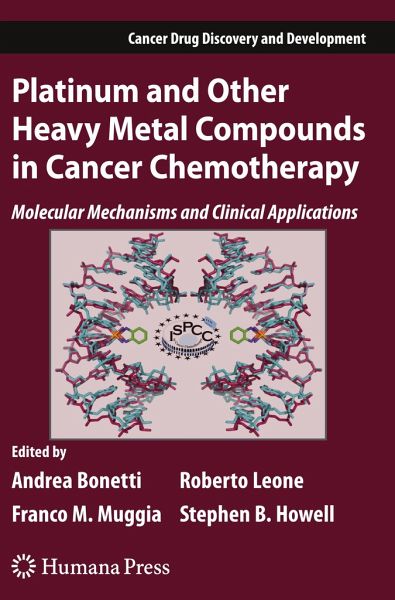
Platinum and Other Heavy Metal Compounds in Cancer Chemotherapy
Molecular Mechanisms and Clinical Applications
Herausgegeben: Bonetti, Andrea; Leone, Roberto; Muggia, Franco; Howell, Stephen B.

PAYBACK Punkte
76 °P sammeln!
Cisplatin, the first member of the family of platinum-containing chemotherapeutic agents, was discovered by Barnett Rosenberg in 1965 and approved by the FDA for marketing in 1978. After 30 years of use in the clinic, cisplatin remains a central element of many treatment regimens. Cisplatin is still an irreplaceable component of a regimen that produces high cure rates in even advanced nonseminomatous germ-cell cancers, and is widely used in the treatment of ovarian cancers and other gynecologic cancers, head and neck, and numerous other tumor types. The development of carboplatin has reduced s...
Cisplatin, the first member of the family of platinum-containing chemotherapeutic agents, was discovered by Barnett Rosenberg in 1965 and approved by the FDA for marketing in 1978. After 30 years of use in the clinic, cisplatin remains a central element of many treatment regimens. Cisplatin is still an irreplaceable component of a regimen that produces high cure rates in even advanced nonseminomatous germ-cell cancers, and is widely used in the treatment of ovarian cancers and other gynecologic cancers, head and neck, and numerous other tumor types. The development of carboplatin has reduced some of the adverse events associated with cisplatin treatment, and the introduction of the DACH platinum compound oxaliplatin has broadened the spectrum of activity of the platinums to include gastro-intestinal cancers, especially colorectal cancer. The clinical importance of this family of drugs continues to drive investigation into how these drugs work and how to improve their efficacy andreduce their toxicity. The papers in this volume were presented in Verona, Italy, during the tenth International Symposium on Platinum Coordination Compounds in Cancer Chemotherapy. The symposium was jointly organized by the Department of Oncology of the Mater Salutis Hospital - Azienda Sanitaria Locale 21 of the Veneto Region - and by the Department of Medicine and Public Health, Section of Pharmacology, the University of Verona. They reflect the vitality of this field and the increasing use of new molecular and cell biologic, genetic, and biochemical tools to identify approaches to further improve their use.




